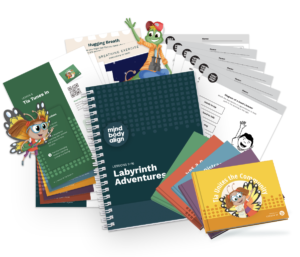Mindfulness in the Classroom
Mindfulness is a powerful tool for educators seeking to establish meaningful connections with their students and promote productive learning experiences in the classroom. As more and more teachers embrace mindfulness practices, they are better equipped to manage stress, foster self-regulation, and promote a deeper understanding of interpersonal communication. Here are ten ways to support teaching with mindfulness:
Establishing a Mindful Environment
Creating a classroom environment in which the teacher is mindful and aware of their own feelings, emotions, thoughts, and reactions can help establish meaningful connections with students. This also helps teachers better understand how to respond to student behavior in a sensitive and appropriate manner.
Modeling Emotional Intelligence
By being mindful of their own emotions, teachers can model emotional intelligence for their students. Mindfulness helps teachers recognize their own responses to stress and frustration, which can be used as an example for students to handle their own stressful situations.
Increasing Patience
Patience is a key aspect of teaching, and mindfulness practices can help teachers develop greater patience in difficult situations. They can also offer insight into why certain behaviors occur when dealing with children.
Promoting Self-Regulation
Teaching mindfulness strategies to young children can help them better manage their emotions and self-regulate in challenging environments. With increased self-regulation, students can develop higher levels of discipline, focus, empathy, and self-awareness in the classroom.
Improving Concentration
When teachers lead by example with peaceful concentration techniques such as deep breathing exercises or guided visualizations, children are less likely to become easily distracted or overwhelmed during instruction time.
Boosting Self-Esteem
Developing mindfulness techniques in the education setting can foster positive self-talk that helps bring about greater levels of confidence in children’s abilities to handle difficult tasks or responsibilities inside and outside the classroom.
Communicating Effectively
Practicing mindfulness helps teachers develop active listening skills that are essential for providing clear communication between educators and students. This promotes open dialogue, increases engagement, and sets the stage for further collaboration between peer groups within the classroom.
Encouraging Reflection
Engaging children in reflective practice enables them to explore how their actions impact not only themselves but also those around them. It encourages heartfelt awareness, leading to improved decision-making skills as well as an understanding of personal strengths, weaknesses, goals, values, and motivations.
Improving Interpersonal Skills
Mindfulness encourages teachers to watch for cues from students that could indicate fear, anxiety, or discomfort during social interactions. Through this process, they can learn more effective ways of engaging with each other while creating stronger bonds between themselves and the teacher within a nurturing class atmosphere.
Building Resilience
Children can develop resilience through mindful practices like focusing on body sensations when experiencing uncomfortable moments or turning negative thoughts into helpful ones with positive affirmations that serve as reminders for strength during times of adversity.
Mindfulness practices have been proven beneficial time after time when it comes to helping educators achieve success both inside and outside of the classroom. By embracing these easy techniques, educators can support teaching with mindfulness and improve their ability to connect with their students, promote learning, and achieve greater personal satisfaction in their careers. Want to learn more about our award-nominated programs for students? Contact our team today










